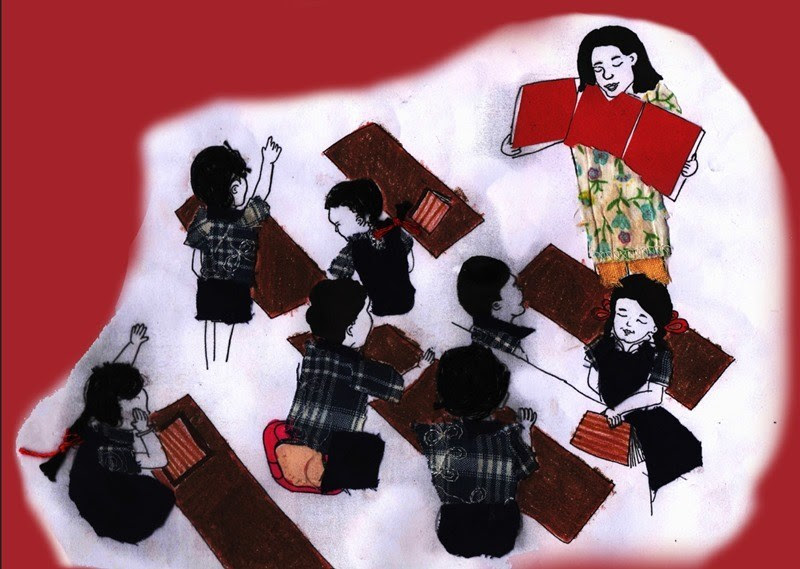Our classrooms are expected to be diverse. In our Libraries in Schools program, we carefully and very intentionally select our schools on a criteria of diversity and then proceed to embrace this range of utter un-uniformity.
The ethos of ‘access to all’ is made real by choosing schools with a high density of children coming from different language and cultural backgrounds. Everyone deserves access to a book.

However, even with our hearts, intentions and desires all in the right place, the challenge comes when we very abruptly face these differences in the classroom, and are left to choose between two deep ends and the little space in between…
“As I walk into school after a long absence, I meet young Shaurya in the corridor. He sees me and says “moti teacher aile!” (The fat teacher is here) and I pride myself on not taking this description personally because this is how I am singled out from the ‘bareek teachers’ (thin teachers) on the team. I go about doing some other tasks and find myself in the same classroom later. Again Shaurya comes rushing through the narrow aisles of benches and bags and this time he whips out his belt and starts swinging it, saying “ Aile, aata aile ! Khuin ashile tu?” (Now, you have shown up! Where were you? )”
Hours later I was able to recount this dramatic episode and find the humor in it; but at that moment I was torn viciously between two stark extremes: the need to stop him harshly and enquire about this tone, attitude and content or to dismiss him. I did neither. Instead, I chose that little space in between. I asked him “You missed me?” and in his own way he conveyed his reply “khoob tempe aan aile! “. (You have come after a long time!)
There was a moment there when our exchange could have easily shifted or escalated to one of power, struggle and misunderstanding. While I want to nurture intimate relationships with children, I also harbor ideas about how they must speak to me, what is constituted ‘due’ respect and some invisible boundaries that are not yet known to young children like Shaurya who come from different social backgrounds. Each of us are right in our own way but when our paths cross, who gives and how?
As our program grows and strengthens in its pedagogy and delivery of a library curriculum, we need to simultaneously strengthen our understanding, of teaching around diversity or with diversity. We want to be responsive to the needs of the children, we want to celebrate differences and respect them. But as always, this is easier said than done.
Years of being in classrooms, and full awareness of what I want to do and how, and I still fall back on old ways of thinking that I wasn’t even aware I harbored. The children, as ever teach me about my own failings on measures of equity and justice.
“”teacher, navi sandals poi”, (teacher, look at my new sandals) and I smile and think I recognize the joy of having a new pair of footwear in a new school year. “Lovely” I say passively and move my mind to other things at hand. In a jiffy, young Yash now has his feet upon the desk and he is leaning back and gazing at his sandals. “Teacher, Yash –ak poi” (teacher, look at Yash), I hear and turn to view this scene. My instinctive response is to say “put your feet down” or “feet belong on the ground”, but do they? When the object of joy and pleasure is those sandals upon his feet!”
I find I have these critical, fast fleeting moments to clamp down on my own expectations of behavior; to think about each young child and what they are trying to say to me in their own way and subsequently to draw from that what meaning and therefore what response I want to make.
Not all my episodes of cultural differences are romantic. I am slipping most days faster than I can pick myself up. However, I am choosing to reflect on all my slip ups with more thoughtfulness and understanding; especially in the face of a diverse school population about whom I can only learn if I allow them… to be.
